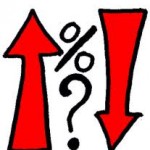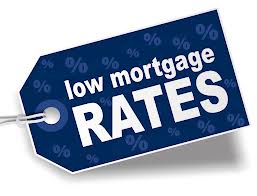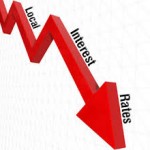Minneapolis, MN: Just 10-years ago, 30-year fixed rates were 6.125%, and the real estate market was hot. With rising interest rates, 2017 may be a bit more challenging for home buyers. But the biggest challenge for most people who wish to buy a home is down payment.
You do not need 20% down payment to buy a home! I repeat, you do not need 20%. This large down payment myth has been around forever, but it simply isn’t true for the vast majority of people buying their first primary residence. There are many program that allow for no down payment, or low down payment. Some jumbo loans buyers (loans over $424,100 in most parts of the county), as will people buying investment properties will usually need a large down payment. But for the rest of us, there are many low down payment, no down payment loan options for 2017.

First Time Home Buyer programs:
The term first time home buyer program covers a wide net of potential programs and options. To be a first time home buyer, you simply must not have owned a home in the past three-years. If you owned a home in the past, but it has been longer than three-years, you are a first time home buyer again. Some options allow for lower rates, cheaper mortgage insurance, and even down payment assistance. Most come with additional strings attached, like household income requirements, lower debt to income requirements, and that you must take first time home buyer education classes.
FHA Loans:
FHA backed loans are very popular, and only require a small 3.50% down payment. The down payment can be your own money (checking/savings/retirement), a gift from a family member, or can come from a down payment assistance program. FHA loans are more forgiving than other loans, for example allowing just a two-year waiting period if you have a previous bankruptcy, and a three-year waiting period after a previous foreclosure. Maximum loan limits apply based on the medium income of the county the property will be located. Check FHA Loan Limits
Conventional 97 Loans:
Both Fannie Mae and Freddie Mac offer a 3% down payment program. The down payment can be your own money (checking/savings/retirement), or a gift from a family member. This is a great program, especially for those with higher credit scores, or homes that need a little TLC that might not pass FHA loan inspections.
Conventional HomeReady™ Loans:
Fannie Mae offers an additional 3% down loan called HomeReady for first time home buyers. You need to take a home buyer education class, but you’ll be rewarded with lower interest rates, and lower mortgage insurance than the standard 3% down conventional loan.
Conventional 95 Loans:
Both Fannie Mae and Freddie Mac offer a basic 5% down payment program. This is your everyday, plain vanilla mortgage loan available to everyone.
VA Loans (100% financing):
Available for active or retired U.S. Military personal, the VA loan is truly one of the best benefits this country offers for your service. The VA loan is a no down payment program, and also has no mortgage insurance whatsoever. This is a huge savings per month over any other low or no down payment loan. Closing costs can be rolled into the loan, making for a home purchase, that for most people, is about as close to zero money out of pocket to buy a home as you’ll ever get.
USDA Rural Housing (100% financing):
Available to those wishing to buy in more rural areas of the country, the USDA Rural Development loan does not require a down payment. While the loan does have mortgage insurance, the cost is very low compared to other loans. You need to meet household income, and property location requirements.
Down Payment Assistance:
Down payment assistance comes in many different flavors from neighbors, city, county, and even state programs.  Generally these are in the form of a loan that needs to eventually be paid back, but there are a very small number that are actually forgiven if you live in the home a set period (like 9-years or longer). The assistance loan can be combined with a standard loan, like an FHA loan, to be used for down payment. Household income, and property location are common requirements.
Generally these are in the form of a loan that needs to eventually be paid back, but there are a very small number that are actually forgiven if you live in the home a set period (like 9-years or longer). The assistance loan can be combined with a standard loan, like an FHA loan, to be used for down payment. Household income, and property location are common requirements.
The Bottom Line:
If want to own your own home, you have OK or better credit, a stable income, and at least a little money in the bank, by all means, you should apply for a home loan. Your Loan Officer will review your loan application, then go over the various program to see what programs you qualify for, how much house you can buy, what the payments might look like, and finally, how much cash you may, or may not need to put it all together.
Best case, you’ll be in your own home sooner than you thought. Worse case, your Loan Officer will go over what you need to do to be in position to buy a home in the near future. Either way, a win win for you.

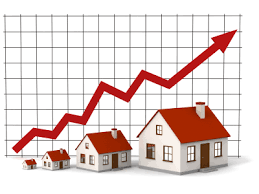 What a difference a week makes, last Monday, the day before the election, rates averaged 3.625%. Over the past 3 days business day (Friday the markets were closed for Veterans Day), rates have moved higher and faster than the last big 3-day move back in 1987, where rates moved higher more quickly on an outright basis.
What a difference a week makes, last Monday, the day before the election, rates averaged 3.625%. Over the past 3 days business day (Friday the markets were closed for Veterans Day), rates have moved higher and faster than the last big 3-day move back in 1987, where rates moved higher more quickly on an outright basis. In terms of standard conventional 30-yr fixed mortgage rates, the BEST we’ve ever seen was for just a few days in 2012, when the best clients could get 3.125% – 3.25%.
In terms of standard conventional 30-yr fixed mortgage rates, the BEST we’ve ever seen was for just a few days in 2012, when the best clients could get 3.125% – 3.25%. (Fannie Mae, Freddie Mac, FHA Loans,
(Fannie Mae, Freddie Mac, FHA Loans,  By doing this, the lender requires less initially because they make it up by collecting more in interest over time.
By doing this, the lender requires less initially because they make it up by collecting more in interest over time.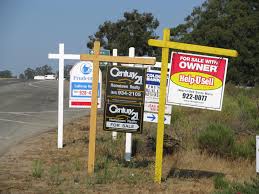

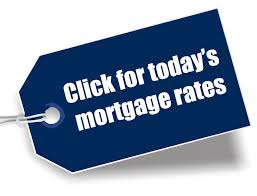
 Mortgage interest rates are likely to move up and down many times during this lockable period, which is usually 60-days or less. Rarely do we see rates make big moves, rather just small moves of 1/8th to 1/4 percent higher or lower during that period. A typical example week may be something like 4.625% on Monday, 4.75% on Tuesday, 4.625% on Wednesday, 4.50% of Thursday, and 4.625% again on Friday.
Mortgage interest rates are likely to move up and down many times during this lockable period, which is usually 60-days or less. Rarely do we see rates make big moves, rather just small moves of 1/8th to 1/4 percent higher or lower during that period. A typical example week may be something like 4.625% on Monday, 4.75% on Tuesday, 4.625% on Wednesday, 4.50% of Thursday, and 4.625% again on Friday.


 Another problem is many web sites don’t update daily, or even weekly. Newspapers, and other print media may have collected rate information on Wednesday morning for publication in Sundays paper. This week, that would leave people with quotes at least .375% to .500% lower than reality.
Another problem is many web sites don’t update daily, or even weekly. Newspapers, and other print media may have collected rate information on Wednesday morning for publication in Sundays paper. This week, that would leave people with quotes at least .375% to .500% lower than reality.
